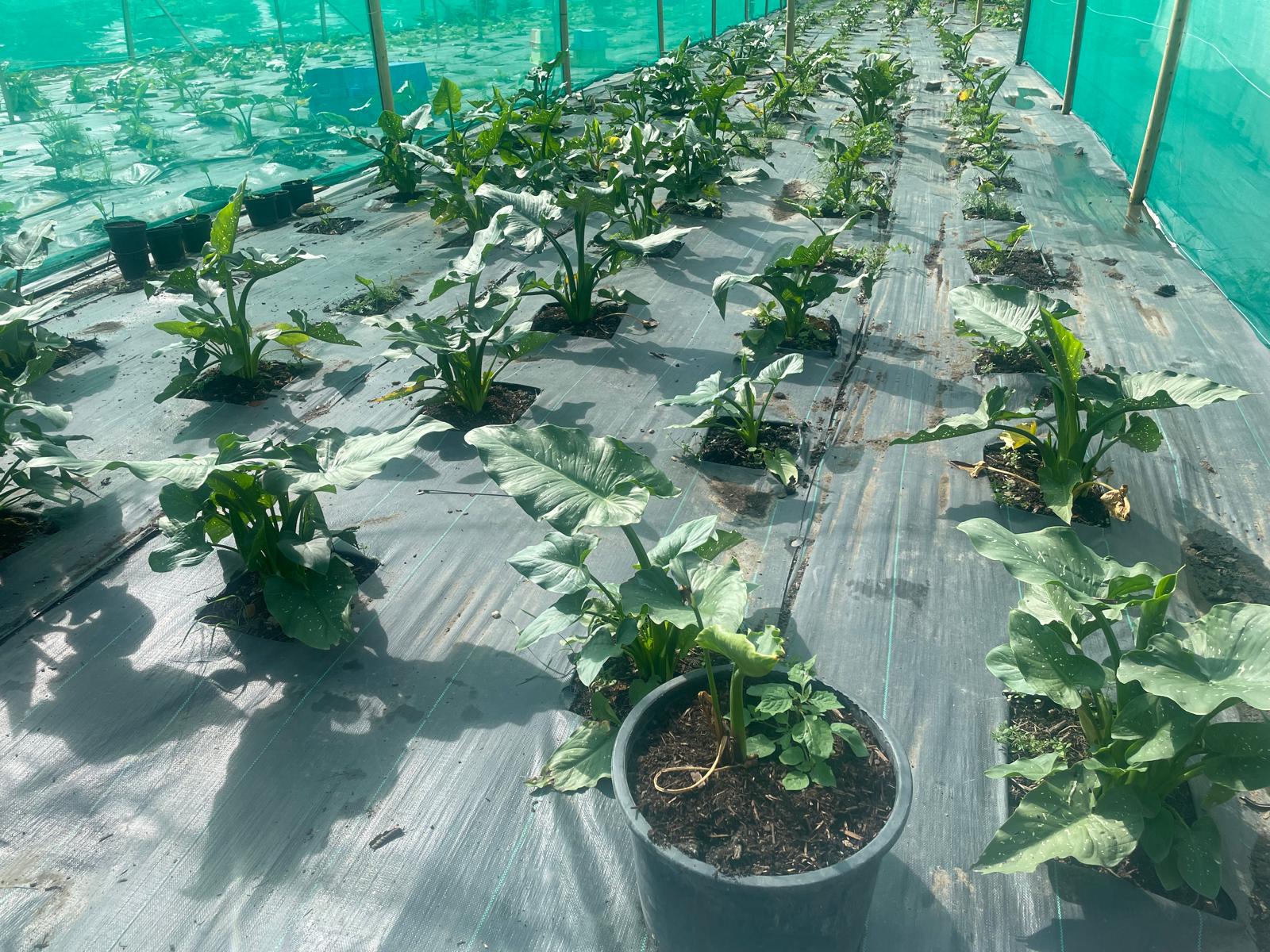Your cart is currently empty!
Calla Lily: A Comprehensive Guide to the Elegant and Versatile Flower

Introduction
Callas, also known as arum lilies or trumpet lilies, are captivating plants known for their striking trumpet-shaped flowers and elegant foliage. Native to South Africa, these popular garden and floral design choices are prized for their graceful beauty, adaptability, and symbolism.
Botanical Description
Plant Type
Callas are herbaceous perennials that typically grow from rhizomes or bulbs. They feature fleshy stems and large, arrow-shaped leaves that may be green, variegated, or spotted with white or cream.
Flowers
The iconic flower of the calla lily is composed of a central spadix, which is a fleshy spike surrounded by a showy spathe, a large, petal-like bract that forms the trumpet-shaped structure. Spathes come in a wide range of colors, including white, yellow, pink, purple, and black.
Cultivation
Hardiness Zones
Callas are generally hardy in USDA hardiness zones 7-10. In cooler climates, they can be grown as container plants or overwintered indoors.
Soil Requirements
Callas prefer well-draining, moisture-retentive soil with a pH between 6.0 and 6.5. They can tolerate slightly acidic or alkaline soils.
Light Requirements
Callas thrive in bright, indirect sunlight. They can also tolerate partial shade, but flowering may be reduced.
Watering
During the growing season, calla lilies require regular watering to keep the soil consistently moist. Avoid overwatering, as this can lead to root rot.
Fertilization
Fertilize callas monthly with a balanced liquid fertilizer during the growing season. Stop fertilizing in the fall as the plant goes dormant.
Uses and Symbolism
Landscape Uses
Callas are versatile plants that can be used in various landscape settings. They make excellent border plants, ground covers, and accents in flower beds and containers.
Cut Flowers
Calla lilies are highly sought-after cut flowers due to their elegance and long vase life. They are often used in bouquets, arrangements, and centerpieces.
Symbolism
Callas have a rich history of symbolism, representing purity, innocence, elegance, and beauty. They are often associated with weddings, funerals, and other special occasions.
Propagation
Callas can be propagated by dividing the rhizomes or bulbs in the spring or fall. Follow these steps:
- Dig up the rhizomes or bulbs carefully.
- Separate the rhizomes or bulbs into individual sections, each with a few healthy roots.
- Plant the sections in well-prepared soil, at a depth of 2-3 inches.
- Water thoroughly and keep the soil moist.
Common Pests and Diseases
Pests
- Aphids
- Spider mites
- Thrips
Diseases
- Botrytis blight
- Fusarium wilt
- Southern blight
Troubleshooting
Yellowing Leaves
Yellowing leaves can indicate overwatering or a lack of nutrients. Adjust watering and fertilize regularly.
Brown Tips on Leaves
Brown tips on leaves may be a sign of underwatering or low humidity. Water more frequently and mist the leaves regularly.
No Blooms
Lack of blooms can be caused by inadequate light, improper fertilization, or insufficient dormancy. Provide more light, fertilize as recommended, and allow the plant to go dormant in the fall.
Conclusion
Calla lilies are a beautiful and versatile addition to any garden or floral arrangement. With proper care, these elegant plants will reward you with their graceful presence and abundance of blooms for years to come. Whether you grow them for aesthetic enjoyment, cut flowers, or symbolism, callas are sure to leave a lasting impression.
Other Calla Lily Varieties
- Miniature Callas: Compact varieties with flowers around 2-4 inches in size.
- Trumpet Callas: Traditional varieties with long, trumpet-shaped flowers that can reach up to 12 inches in length.
- Double Callas: Unique varieties with double-layered spathes, creating a fuller and more dramatic bloom.
- Frilled Callas: Varieties with ruffled or fringed spathes, adding a touch of whimsy to any arrangement.
Calla Lily Care Table
| Month | Watering | Fertilizing | Dormancy |
|---|---|---|---|
| Spring | Regular | Monthly | No |
| Summer | Regular | Monthly | No |
| Fall | Reduce | Stop | Yes |
| Winter | Minimal | No | Yes |
Calla Lily FAQs
Are calla lilies toxic?
Yes, all parts of the calla lily plant are toxic and can cause irritation and gastrointestinal problems if ingested. It is important to keep them away from pets and children.
Do calla lilies like full sun or shade?
Callas prefer bright, indirect sunlight. They can tolerate partial shade, but flowering may be reduced.
How often should I water calla lilies?
During the growing season, callas require regular watering to keep the soil consistently moist. Avoid overwatering, as this can lead to root rot.
What is the best soil for calla lilies?
Callas prefer well-draining, moisture-retentive soil with a pH between 6.0 and 6.5. They can tolerate slightly acidic or alkaline soils.
How do I propagate calla lilies?
Callas can be propagated by dividing the rhizomes or bulbs in the spring or fall. Separate the sections into individual pieces with healthy roots and plant them in well-prepared soil.
Our Shop
-
Crowborough — Zantedeschia aethiopica ‘Crowborough’
-
Green Goddess — Zantedeschia ‘Green Goddess’
-
Hercules — Zantedeschia aethiopica ‘Hercules’
-
Highveld — Zantedeschia ‘Highveld’
-
Odorata — Zantedeschia odorata
-
Pink Flamingo — Zantedeschia ‘Pink Flamingo’
-
Pink Mist — Zantedeschia ‘Pink Mist’
-
White Giant — Zantedeschia aethiopica ‘White Giant’










Leave a Reply